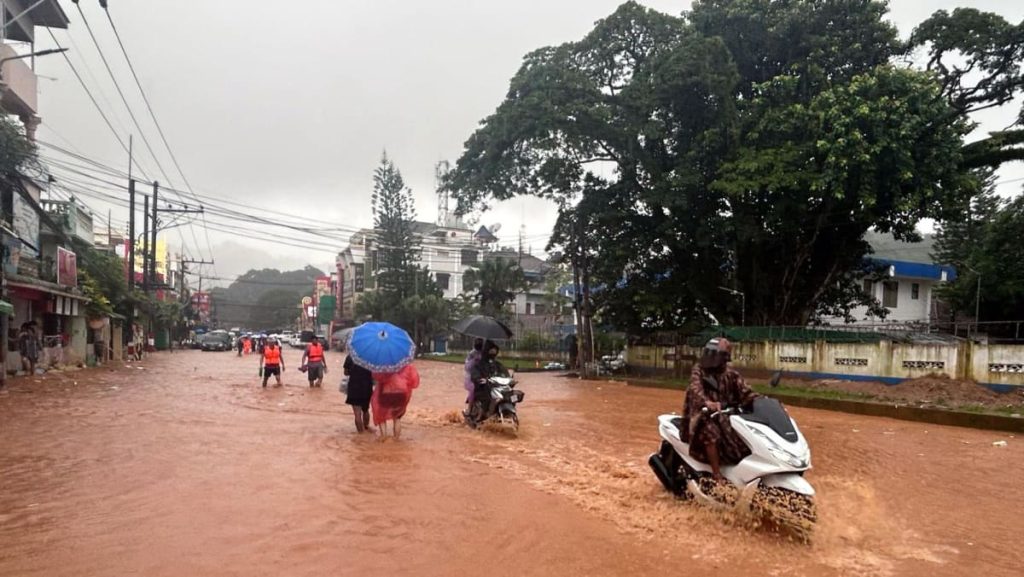The town of Tachileik in Myanmar has been hit with heavy rains which have caused flooding, knocking out power and telephone lines and trapping many residents. Images from the town show streets submerged in red-brown waters, with people using motorcycles to navigate through the flooding. Resident Phoo Phoo mentioned that some houses were already submerged and people were stuck at their offices unable to leave. The flooding has also resulted in telephone and electricity lines going down in the town which is home to at least 60,000 people.
Social media posts revealed people sitting on their roofs as the floodwaters flowed below them. Across the border in Thailand’s Mae Sai district, similar flooding was reported, with water running through the streets. Thailand’s weather office issued warnings for heavy rains in the north on the following day. Just a week before the flooding incident, a boat traveling along the Mekong River near Tachileik had a mishap causing at least 20 people to go missing. The rainy season in Myanmar typically brings heavy downpours to the country, and scientists have noted that man-made climate change is leading to more intense weather patterns.
The situation in Tachileik and Mae Sai highlights the impact of heavy rainfall and flooding on the border regions between Myanmar and Thailand. The flooding has caused significant disruptions to daily life, with residents trapped and communication lines down. The need for rescue and relief efforts is crucial, especially for those stranded in flooded areas. The images of flooded streets and submerged homes paint a grim picture of the aftermath of the heavy rains that have hit the region.
Myanmar’s susceptibility to flooding during the rainy season is worsened by man-made climate change, which is said to be intensifying weather patterns. This poses a challenge for disaster management and response efforts in the region as extreme weather events become more frequent. The incident of the missing boat passengers on the Mekong River also highlights the dangers posed by the unpredictable weather conditions. Immediate action needs to be taken to address the impacts of the flooding and to ensure the safety and well-being of affected residents in both Tachileik and Mae Sai.
As the rainy season continues, it is important for authorities in Myanmar and Thailand to be prepared for further heavy rains and potential flooding in the region. Proactive measures such as early warning systems and emergency response plans need to be in place to mitigate the impact of natural disasters on vulnerable communities. The need for international cooperation and support in addressing the challenges posed by climate change and extreme weather events is also crucial. By working together, countries can better prepare for and respond to future incidents of flooding and other climate-related disasters in the region.


